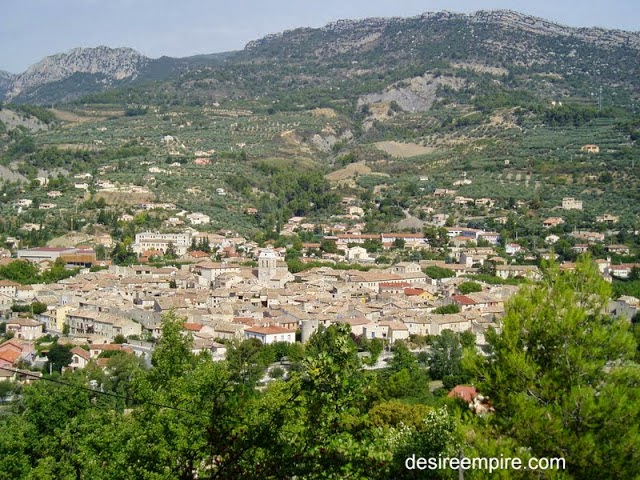Hi All
Today is one of the most sacred holidays on the Australian calender. It is ANZAC day. ANZAC stands for Australian and New Zealand Army Corp. The legend of ANZAC was born in 1915, when Australia and New Zealand faced their first military battles side by side as nations.
The Allies planned to break the stale mate on the Western Front in France by taking Germany through the 'back door' via Gallipoli in Turkey. It was a complete baptism of fire for the ANZACs, as it was a badly organised defeat. It cuts very deep here in Australia, as the Aussies where commanded by the British and it was a fiasco. On that first day, whilst the British troops were landed on a beach and saw little action, the ANZACs were dropped in the thick of it and suffered many casualties. The only real success of the operation was the Australian planned retreat many months later, where not one man was killed. There after in 1916, the ANZACs were sent to reinforce the Allies on the Western front in Northern France.
Several years ago we visited The Somme in Northern France and I have to say it was one of the most moving days of my life. It was only an hours train ride from Paris up to Amiens. I booked it all privately online, and sent my Euros off into the ether on trust. Our fabulous French guide Sylvestre, told us to be at the glass doors at Amiens station at 10am on that particular day. That's all the information we got and in typical relaxed French country style, he was there at 10am as promised. We showed up a little before the designated hour and found a little cafe across the road from the station for a quick morning coffee. As we entered, all 6 guys sitting around the bar stopped what they were doing and looked at us as if we had two heads. We ordered our cafe, drank it quickly and left, hoping our day would get better and believe me it did.
Next time we visit France, we plan to spend a week up there. But if you have limited time, I recommend this day trip from Paris to anyone and a guide is probably the most efficient way to do it. If you make the effort, I promise you will be moved beyond belief.
We all in this interiors blogging circle, know and love France for her beauty. She is the absolute pinnacle of
style and elegance, but she has a dark history, that has shaped her people and ours and made us all what we are today.
I am starting at the end really, in the town of Villers Bretonneux. As I write this thousands of Australians and French are gathering in that place to celebrate this decisive battle fought there in 1918, which was the beginning of the end for the Germans and consequently the war itself.
As you can see from the map, Villers Bretonneux was the last town before the major roads and rail line at Amiens. Had the Germans got to Amiens, they were a short train ride into Paris. Their artillery was already within range of the outskirts of Paris at this point. But on 25 April 1918, it is no exaggeration to say that the Australians stopped them along this road. It was so decisive that the little primary school in Villers Bretonneux has a sign in it's playground that says 'Do Not Forget Australia' and a beautiful little museum which is an important stop on any tour of the Somme.
In 1918, the Germans were making one very big and successful push across Northern France in order to end the war. The Germans had regained much of the Territory won, at such a high human cost on both sides, by the Allies over the four years of the war and had pushed the Allies back from Belgium all the way back to the Somme in the first few months of 1918. So the fact they were stopped here at VB, was the turning point to the Allies victory.
This tower I am standing on, is in the Australian war cemetery at Villers Bretonneux. The church spire on the horizon was were the Red Barron was shot down in 1918. It is disputed between the Australians and Canadians as to who shot him down, but he came down in the Australian sector of the front line, so of course we like to claim that one.
The tower at Villers Bretonneux was used as a high post by the French in WW2, as the Germans came through again in 1939. Hilter with his Blitz Kreig, was able to do in 4 weeks what the Germans were unable to do in 4 years in WW1 and that was to break through to Paris. Those are WW2 bullet holes from German fire you can see behind the boys.
This rectangular monument adorns the entrance to all Australian war graves across the world. It's curvature at the top is to the exact angle of the earth's surface. The idea is that it links all the war graves and the soldiers in them together.
The Australians were known for their sense of humour and their inability to conform to military protocol. The Aussies named one of the main streets in the town of Peronne, Roo de Kanga, a deviation of Kangaroo, it is still named that today in their honour. They were larikins and may not have been able to salute officers and handle the military hierarchy of pomp and ceremony, but that is also what made them so tough and ingenious and so feared by the enemy.
Here the boys are lying in a shell hole at Mouquet Farm.
Mouquet Farm was another location, where the Australians had a terribly slaughterous and badly led defeat early in the war. So many wasted lives, but they were still able to find some humour in it, referring to the area as Moo Cow Farm.
This German pill box was on the farm of our tour guide's grandmother. Thus he was able to dig it out and he had installed electricity so we were able to go down the first few steps into the bunker. The older French understandably don't want to promote the area for it's war history. They just want to forget it. There are thousands of tunnels in this area, but most are on private land and have been sealed.
The Germans built such strong posts because in 1914 as they believed this was their new border with France. The Germans were very well dug in at the beginning of the war and that is why the Allies only gained such little ground for such huge losses. The heads thought that the artillery bombardments would debunk the Germans so the infantry could just jump over the trenches, walk across no mans land, and take the German held territory. But the German system of bunkers was so good, that apart from nerves due to the bombardment, the Allied artillery barely touched them. The artillery shells were inadequate to penetrate the concrete so the Germans were well protected underground during the Allied bombardments. The Allies were ordered to attack after these inadequate bombardments. As the Allies ran across no man's land they were mowed down by the German machine guns.
This pill box was on the border of the Australian and Canadian sectors, so our tour guide concluded that it had been captured by either of those two armies. The Allied helmet dug up by Sylvestre complete with bullet holes, a poignant reminder of what happened in that bunker as it was over run.
Inside the German Bunker. A very eerie feeling

This is another example of the German's ingenuity with concrete. This would have originally been the cellar to someones home. It was shored up with concrete and used as a German bunker on the front line at Pozieres in 1916.
The same German bunker as above, note the concrete pylons.
The fields of Pozieres, were Australians first saw action in France in 1916, Some 5000 Aussies were killed on the first day of fighting, here in these fields. At this stage of the war the Australians were under Allied command and not their own. The Generals commanding the battle, were several miles back. It all looked good on paper, with their flat maps and plans of attack. The communications were usually cut off early in the battle, so the men were told to follow orders that were completely out of touch with the reality of what was occurring at the front. Asking men to do the impossible . That is cross open low ground under direct machine gun fire that the Allied artillery barrage had not dislodged.
Walking with dead bodies at Pozieres
The Australian memorial at Hamel, another great Australian victory in 1918, led by their own General Monash. It is interesting that this was the only war memorial the Germans destroyed in WW2 as they passed through Northern France in 1939, as it was originally an Australian solider bayoneting an eagle, a sacred German military symbol, which was a great insult to the Germans.
These trenches at Beaumont Hamel were perhaps the most moving of the day. The battalion that fought on this part of the front line was from Newfoundland in Canada. It was a complete slaughter for the same reasons that so many Australians were killed at Pozieres and Mouquet Farm, the Germans were very well dug in in Bunkers. After a sustained bombardment on the German positions, the Canadians were told to just walk across no mans land toward the Germans. This was the complete naivety of their orders and 85% of the Canadian battalion was killed in the first 15 minutes of the battle.
The only good part in this story, is that the Canadian Chaplin from this battalion returned after the war to negotiate with 250 different land owners to purchase their land, so that it could be retained as a memorial to that disastrous battle. These are some of the only trench systems remaining in Northern France, thanks to the foresight of that Chaplain. Immediately after the war the whole of northern France looked like this but without the grass. The government offered a bounty of several French francs for each hole filled in and several more again for any bodies retrieved. Often the bomb craters were corruptly covered over with slabs of metal or concrete and then peppered with soil. According to our guide, it is not unusual to slump into one of these depressions when driving around some towns or for a plough to hit a slab of corrugated iron out in the fields. The German bunker system was extensive and has not been completely filled in. Hopefully one day it is all opened up and preserved.
You can just make out the moose in the centre, at the top of the Canadian memorial at the top of the monument. The reason the trenches are roped off, is because there are so many unexploded shells. In Northern France some 35 people are killed or injured annually, by exploding shells.
Here are some shell casings collected and piled up in a suburban backyard. They are everywhere.
This was a German war grave we visited, an equally haunting and sad place.
Thanks for coming this far with me. I hope you have learned something and enjoyed your little trip to the battlefields of Northern France.
Almost 100 years on we will be honouring our servicemen and women next Wednesday. We will be attending our local RSL, where our son will play in the band during proceedings and then he will march through the streets wearing his grandfather's and great grandfather's service medals. A proud and sombre moment for us.
For more travel stories go here










































































































An amazing post Carolyn,
ReplyDeleteI'm nearly in tears......
these stories always get me.
Tania xx
Thank you for sharing this, Carolyn.
ReplyDeleteGood on ya.
This was a history lesson, Carolyn!
ReplyDeleteBeautiful and sad at moments...
Thanks for re-sharing, Carolyn!
ReplyDeleteI'm hoping to visit France next year, and plan on going up to Normandy - I want to see the beaches of Normandy and Omaha beach, and to visit the war cemeteries.
What an amazing and interesting history lesson. Thank you.
ReplyDeleteSome beautiful pictures in there Carolyn. I've always been fascinated with our history in France, I've bookmarked your page so I can read later without the kids bugging me x
ReplyDeleteCarolyn, thanks for taking us along. We made this trip in 1999. The world needs to remember the sacrifices that were made during this war.
ReplyDeleteWhat an informative post. I read it all and I learned several new things. Thanks!
ReplyDelete~cathy
This was a very interesting post. Thank you for sharing your experience and your history.
ReplyDeleteThank you for sharing such an interesting post. Even the photo's carry a haunted feeling to them and a sadness of the history of that area......My Grandfather fought in WW 1 so this carries intense personal feelings for me....thanks once again....
ReplyDeleteHeather
Stopping by from FFA Friday flashback http://kingofsaving.com
ReplyDeleteAmazing post, sounds like a fascinating place to visit! When you view the stats of the number of young men that died in WWI and WWII it really is quite sobering!
ReplyDeleteA very touching post. I grew up in France and have walked the maginot line and been in the bunkers. Somehow, missed this part of history.. thanks for sharing.. xo marlis
ReplyDeleteA beautiful and touching post, thank you xx
ReplyDeleteSuch a thoughtful post. Glad you shared it on "Cowgirl Up". I just featured your blog on my facebook page, check it out. https://www.facebook.com/pages/Crafty-Texas-Girls/140299076008437
ReplyDelete:) Samantha @ Crafty Texas Girls
wow.
ReplyDeleteThank you for posting.
Thanks for sharing your memorable journey into our history of our brave and never to be forgotten young soldiers. I am taking the trip to the Somme in Oct.to pay my respects to these men.
ReplyDeleteKay x